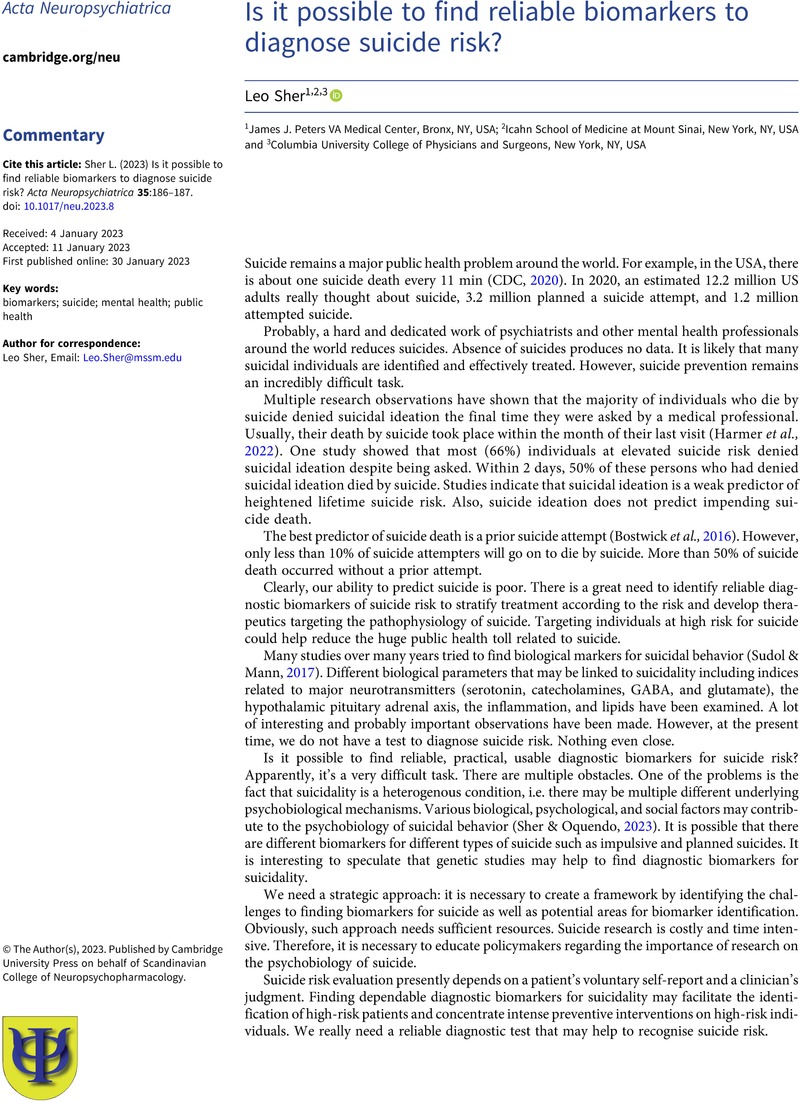Crossref Citations
This article has been cited by the following publications. This list is generated based on data provided by Crossref.
Sher, L
2024.
Suicide in individuals with no psychiatric disorders: what makes you vulnerable?.
QJM: An International Journal of Medicine,
Vol. 117,
Issue. 5,
p.
313.




